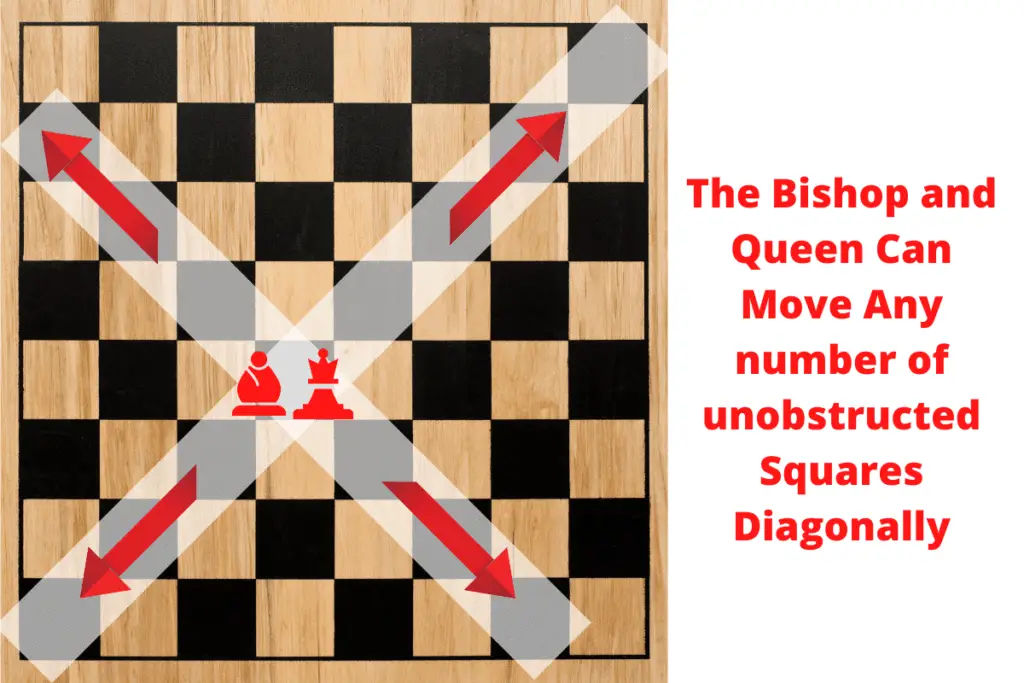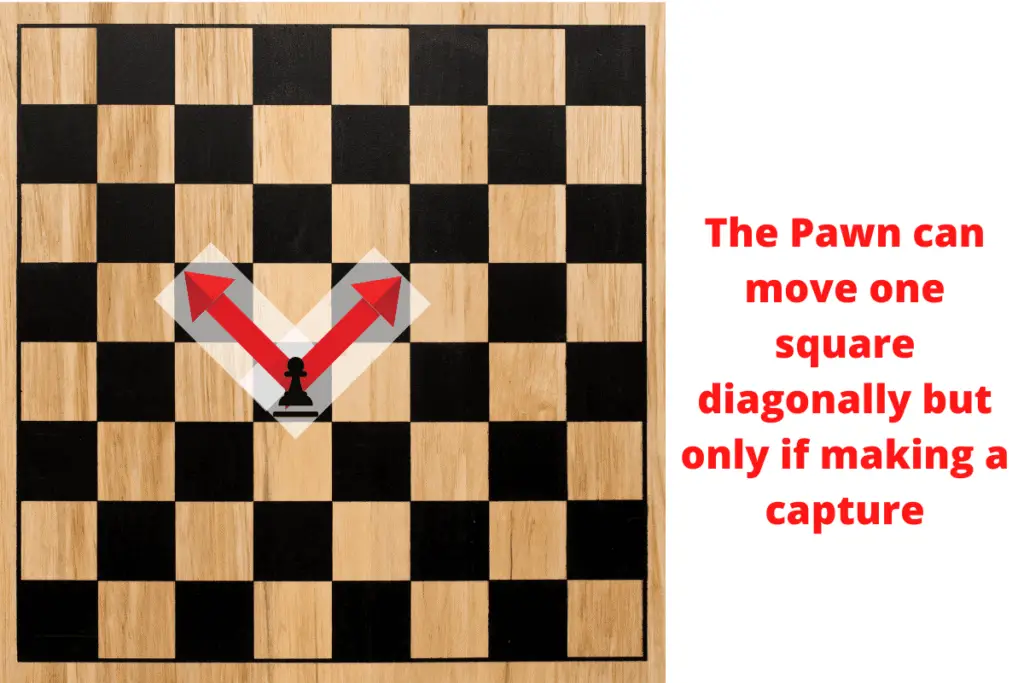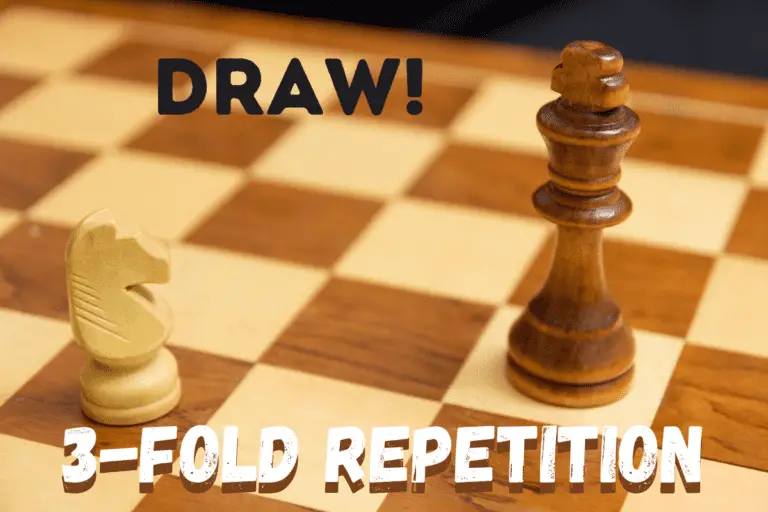Every Diagonal Piece and Move in Chess (Simplified)
⭐⭐⭐ Take 5 minutes to read and improve your chess game ➡️ : This article was first published on, and is Copyright of Chessquestions.com
What makes chess such a fantastic game is the abilities and equal limitations of the range of pieces you have at your disposal to go to war with your opponent on the chess board. Some can move diagonally, another only diagonally, whilst another can only move on the diagonal in certain circumstances. This post is going to cover all diagonal possibilities of pieces on a chess board
4 individual chess pieces have the ability to move in a diagonal direction on the chessboard. The Bishop, The Queen, and the King. Each has diagonal reach to varying degrees whilst the final piece of the quartet, the pawn can move diagonally only when capturing
Well, you can capture all the information about the diagonal movement of these four pieces in this article which goes diagonally deep into explaining the full range of diagonal possibilities of the quartet answering common questions about diagonally moving chess pieces.
Table of Diagonal Movement Chess Pieces
| Piece | Diagonal Range | Value |
|---|---|---|
| Bishop | Full | 3pts |
| Queen | Full | 9pts |
| King | One Square | n/a |
| Pawn | One Square (Capture Only) | 1pt |
There are loosely attached points value for pieces in chess. They are not used for scoring, but rather a value score for consideration in your advanced chess strategies. Rooks are worth 5pts whilst Knight are the same 3pts as bishops.
All standard diagonally moving pieces in chess are interestingly arranged in a row of four on the first rank of the board – Bishop – Queen – King – Bishop

1. The bishop is the piece that ONLY moves diagonally in chess
- Diagonal Range – As many squares as a free path or capture allows
- Value – 3pts
The Chess Bishop Diagonal Move Fact File
- Barring obstructions the bishop can move diagonally in any direction forward or backward
- A bishop is unable to jump over another piece in chess. If another piece obstructs its path it can move only to an adjacent square (Own piece) or make a capture (Enemy piece)
- With a full range, a bishop can move a maximum of seven diagonal spaces
- The bishop piece is able to capture any piece on the board and check the King
- If a bishop starts on a light square it will remain on them throughout the game, likewise of it starts on the dark square
The game of chess begins with four bishops on the board. Two White or light-colored Bishops and two black or dark-colored bishops.
They begin the game on the first rank, between the Knight and King on one side, (Kingside Bishop) and the Knight and Queen on the other (Queenside bishop) – There you already got to know the bishops a bit better!
The rank and file of the bishops in starting position is ‘f1’ kingside and ‘c1’ queenside
To be able to get the freedom of movement, pawns on the 2nd rank on files, b,d,e,& g have to be moved to allow for the diagonal move out of the back rank.
Bishop chess pieces gain strength the longer they remain on the board. Because of the limitation to only diagonal movement the bishop can be restricted by a busy centerboard in the early part of chess games.
However, do not under-estimate the effectiveness of them if finding a clear long-range path through discovered attacks, they can be devastating to your enemy with the right bishop tactics

2. The Queen can move diagonally in addition to other moves in chess
- Diagonal Range – As many squares as a free path or capture allows
- Value – 9pts
The Chess Queen Diagonal Move Fact File
- Barring obstructions the Queen can move diagonally in any direction forward or backward across unoccupied squares
- A Queen is unable to jump over another piece. If another piece obstructs its path it can move only to an adjacent square (Own piece) or make a capture (Enemy piece)
- With a full range, a Queen can move a maximum of seven diagonal spaces across the entire board
- The Queen piece is able to capture any piece on the board and check the King
The Queen chess piece is the most powerful piece and most versatile piece in the game of chess as she can move the full range of seven squares diagonally across the board unless blocked by one of her own pieces or making a capture of the other side. This also makes her the most dangerous piece and most valuable piece too!
Chess begins with two Queens, One white queen for the player who starts, and one black queen for the player going second. She begins the game on the first rank centrally on the Square matching her color (Eg the white queen begins on the light colored square and vice versa) – She is positioned between the King and the Queens bishop
3. The King can move diagonally with limitations in chess.
- Diagonal Range – One square as long as not moving into check
- Value – Not applicable
The Chess King Diagonal Move Fact File
- Barring obstructions the King can move diagonally in any direction forward or backward
- A King is unable to jump over another piece. If another piece obstructs its path it can move only to an adjacent square (Own piece) or make a capture (Enemy piece)
- The King can move a maximum of one single space diagonally to a neighboring square
- The King piece cannot move into a space placing itself in check, only to a safe square

The King is able to move diagonally in chess but is limited to just one square move at a time. The King can capture diagonally also, but both movement and capture are limited to a legal move, eg not moving into a check position.
There are two kings at the start of the game, a black king and a white king, sitting between the Queen and the Kings bishop
4. A Pawn can move diagonally ONLY when making a capture in chess
- Diagonal Range – One square forwards only if making a capture.
- Value – 1pt
The Chess Pawn Diagonal Move Fact File
- Barring obstructions the Pawn can move diagonally only forward and only if making a capture.
- The Pawn can move a maximum of One diagonal space to make a capture
- The Pawn chess piece cannot move diagonally backward

Whilst a diagonal move is in the repertoire of the pawn moves, it is the odd one out of the quartet because diagonal movement is not available unless it is making a capture, either in the traditional method or in an en passant capture move.
Summary
I hope that this comprehensive guide to diagonally moving minor pieces and major pieces in chess has helped you understand which individual pieces in chess can move diagonally in chess, as well as confirming that the bishop is the only piece that can move in a diagonal direction in the gam. It does not cover the rooks or Knight or other special moves in chess, so check out the article on chess piece moves which covers all pieces in one place.






